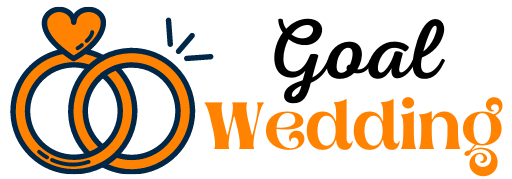The Rise of Strawbeariemilk Leaks: A Growing Concern in the Online Community
-
Table of Contents
- The Rise of Strawbeariemilk Leaks: A Growing Concern in the Online Community
- What are Strawbeariemilk Leaks?
- The Impact of Strawbeariemilk Leaks
- Preventing Strawbeariemilk Leaks
- Case Studies: Notable Strawbeariemilk Leaks
- Case Study 1: The Ashley Madison Hack
- Case Study 2: The Equifax Data Breach
- Q&A: Common Questions about Strawbeariemilk Leaks
- Q1: How can I check if my personal information has been leaked?
- Q2: What should I do if my personal information has been leaked?
- Q3: Can organizations be held legally responsible for strawbeariemilk leaks?
- Q4: Are there any regulations or standards in place to prevent strawbeariemilk leaks?
- Q5: How can individuals stay informed about the latest security threats and best practices?
With the increasing popularity of social media platforms and the ease of sharing information online, the issue of data leaks has become a significant concern for individuals and businesses alike. One particular type of leak that has gained attention in recent years is the phenomenon known as “strawbeariemilk leaks.” In this article, we will explore what strawbeariemilk leaks are, their impact on privacy and security, and how individuals and organizations can protect themselves from such leaks.
What are Strawbeariemilk Leaks?
Strawbeariemilk leaks refer to the unauthorized disclosure of personal or sensitive information on the internet. This term originated from a high-profile incident in which a popular social media influencer’s personal data was exposed without their consent. The leaked information included their real name, address, phone number, and even financial details.
These leaks typically occur when individuals or organizations fail to adequately protect their personal information or when malicious actors exploit vulnerabilities in online platforms. The leaked data can be used for various purposes, including identity theft, harassment, or even blackmail.
The Impact of Strawbeariemilk Leaks
The consequences of strawbeariemilk leaks can be severe and far-reaching. Here are some of the key impacts:
- Privacy Invasion: When personal information is exposed without consent, it can lead to a significant invasion of privacy. Individuals may feel violated and vulnerable, knowing that their private details are accessible to anyone.
- Identity Theft: Leaked personal information can be used by cybercriminals to commit identity theft. This can result in financial loss, damage to credit scores, and a long and arduous process of recovering one’s identity.
- Reputation Damage: For public figures, influencers, or businesses, a strawbeariemilk leak can tarnish their reputation and erode trust among their followers or customers. This can have long-lasting negative effects on their personal or professional lives.
- Emotional Distress: Being a victim of a strawbeariemilk leak can cause significant emotional distress, including anxiety, fear, and a sense of helplessness. The psychological impact of such incidents should not be underestimated.
Preventing Strawbeariemilk Leaks
While it may be impossible to completely eliminate the risk of strawbeariemilk leaks, there are several measures individuals and organizations can take to minimize their vulnerability:
- Strong Passwords: Use unique and complex passwords for all online accounts. Avoid using easily guessable information such as birthdays or names. Consider using a password manager to securely store and generate strong passwords.
- Two-Factor Authentication (2FA): Enable 2FA whenever possible. This adds an extra layer of security by requiring a second form of verification, such as a code sent to your mobile device, in addition to your password.
- Regular Software Updates: Keep all devices and software up to date with the latest security patches. Updates often include fixes for known vulnerabilities that could be exploited by hackers.
- Be Mindful of Sharing Personal Information: Think twice before sharing personal information online, especially on public platforms. Be cautious about the information you provide and consider adjusting privacy settings to limit access to your data.
- Use Encryption: Whenever possible, use encryption to protect your data. This can include encrypting files, using secure messaging apps, or browsing websites with HTTPS encryption.
Case Studies: Notable Strawbeariemilk Leaks
Examining real-world examples can provide valuable insights into the severity and impact of strawbeariemilk leaks. Here are two notable case studies:
Case Study 1: The Ashley Madison Hack
In 2015, the infamous Ashley Madison hack exposed the personal information of millions of users of the extramarital affairs website. The leaked data included names, email addresses, and even credit card information. The incident not only led to divorces and ruined relationships but also resulted in lawsuits against the company for failing to protect user data.
Case Study 2: The Equifax Data Breach
In 2017, Equifax, one of the largest credit reporting agencies, suffered a massive data breach that exposed the personal information of approximately 147 million people. The leaked data included social security numbers, birth dates, and addresses. The breach had significant consequences, including a decline in Equifax’s stock price and widespread criticism of the company’s security practices.
Q&A: Common Questions about Strawbeariemilk Leaks
Q1: How can I check if my personal information has been leaked?
A1: There are several online services and tools available that can help you check if your personal information has been compromised in any known data breaches. These services typically require you to enter your email address or username, and they will notify you if your information appears in any leaked databases.
Q2: What should I do if my personal information has been leaked?
A2: If you discover that your personal information has been leaked, there are several steps you should take. First, change your passwords for all affected accounts. Monitor your financial statements and credit reports for any suspicious activity. Consider placing a fraud alert or credit freeze on your accounts to prevent unauthorized access. Finally, report the incident to the appropriate authorities and consider seeking legal advice if necessary.
Q3: Can organizations be held legally responsible for strawbeariemilk leaks?
A3: In many jurisdictions, organizations have a legal obligation to protect the personal information of their customers or users. Failure to do so can result in legal consequences, including fines and lawsuits. However, the specific legal implications may vary depending on the jurisdiction and the circumstances of the leak.
Q4: Are there any regulations or standards in place to prevent strawbeariemilk leaks?
A4: Several regulations and standards aim to protect personal information and prevent data breaches. Examples include the General Data Protection Regulation (GDPR) in the European Union and the California Consumer Privacy Act (CCPA) in the United States. These regulations impose requirements on organizations regarding data protection, breach notification, and user consent.
Q5: How can individuals stay informed about the latest security threats and best practices?
A5: Staying informed about the latest security threats and best practices is crucial in protecting oneself from strawbeariemilk leaks. Individuals can follow reputable cybersecurity blogs, subscribe to security newsletters, and participate in online communities focused on privacy and security. Additionally, organizations often provide educational resources and guidelines on their websites to help users stay safe online.</





